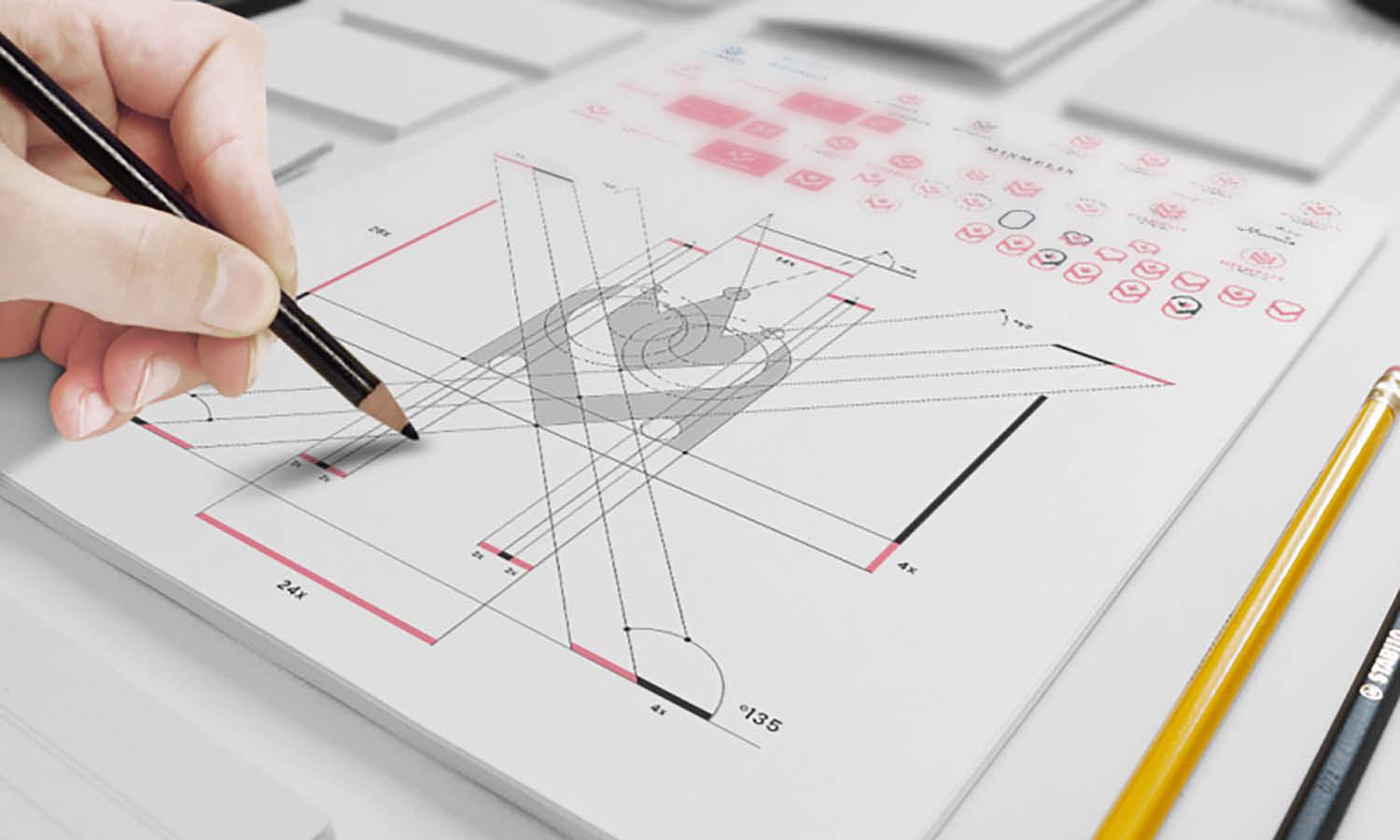Mind Mapping Guide to Present Your Ideas Visually

Mind mapping is a powerful tool for organizing thoughts, brainstorming ideas, and presenting information visually. Whether you're a project manager, a student, or a creative professional, mind maps can help clarify complex topics and enhance your ability to communicate effectively. This guide is designed to introduce you to the basics of mind mapping, from its history to its varied applications in professional and personal settings.
In the following sections, you will discover the essential techniques for creating effective mind maps that capture and connect your ideas creatively and coherently. We will also explore different software and tools that can facilitate the mind mapping process, making it more dynamic and interactive. By the end of this guide, you'll be equipped with the knowledge to use mind maps to present your ideas in a structured, visually engaging manner that can capture the attention of your audience and maximize your impact.
Benefits of Using Mind Mapping
Mind mapping offers a multitude of benefits that make it an essential tool for anyone looking to enhance their cognitive capabilities. One of the primary advantages is its ability to boost creativity and innovation. By visually structuring information, mind maps encourage brainstorming and the free flow of ideas, making it easier to generate new thoughts and solutions. Additionally, mind mapping facilitates better memory retention. The visual elements of a mind map—like colors, images, and spatial organization—engage the brain in a way that helps recall information more effectively compared to traditional notes.
Another significant benefit is the improvement of organization skills. Mind maps clearly display the hierarchy and relationships between different concepts, allowing for a quicker and more intuitive understanding and analysis of information. This can be particularly useful in project planning and decision-making processes. Mind maps also enhance productivity by enabling faster information processing. The concise and graphical nature of mind maps helps individuals and teams to capture and assimilate information rapidly.
Choosing the Right Tools for Mind Mapping
Selecting the appropriate tools is crucial for effective mind mapping, as they can significantly influence the ease and effectiveness of the process. There are several options available, ranging from simple paper and colored pens to sophisticated digital software. Each has its benefits depending on your specific needs.
For those who prefer a tactile experience, using paper and markers is a great way to engage physically with the mind mapping process. This method allows for unrestricted creativity and is easily accessible to everyone. However, for more complex or collaborative mind maps, digital tools may be more suitable. Software like MindMeister, XMind, or Microsoft Visio offers powerful functionalities that enhance the mind mapping experience. These programs allow for easy modifications, large-scale collaborations in real-time, and seamless integration with other digital tools.
When choosing a digital tool, consider features such as ease of use, compatibility with other apps, and the ability to share and export maps in various formats. Many mind mapping software also provide templates and icons that can help speed up the process and make the maps more visually engaging. Additionally, online tools often feature cloud storage, making it easier to access and update your mind maps from anywhere, which is especially beneficial for teams working remotely.
Choosing the Right Central Theme
Choosing the right central theme is foundational to successful mind mapping. This central theme serves as the core from which all other ideas will radiate, so it must be chosen carefully to ensure that your mind map is focused and effective. The central theme should clearly define the subject or problem you are exploring, acting as a concise summary that encapsulates the essence of your broader topic.
To select an appropriate central theme, start by identifying the purpose of your mind map. Ask yourself what you aim to solve, explore, or organize. This could be a project goal, a complex concept, or a set of questions you need to answer. Once you have a clear purpose, distill this into a single, overarching idea that is broad enough to allow for extensive exploration but specific enough to keep your mind map targeted.
Write the central theme in the center of your map or digital canvas, using a bold or large font to make it stand out. This central idea will guide the development of related ideas and ensure that your mind map remains cohesive. A well-chosen central theme not only provides clarity and direction but also enhances the effectiveness of the mind mapping process by keeping your thoughts organized and aligned with your overall objectives.

Adding Branches to Your Map
Once you have established a central theme, the next step in mind mapping is adding branches. These branches are key components that extend from the central theme, representing main ideas or categories that relate directly to your core topic. Each branch should stem from the center, radiating outward, and should be labeled with a single word or short phrase that encapsulates a key concept or category.
To begin, draw a line from the central theme to create your first branch. This primary branch should represent a major aspect or idea of your topic. From each primary branch, you can extend secondary branches, which delve into more specific details or subtopics of the primary idea. It’s essential to maintain a hierarchical structure where primary branches are the main categories and secondary branches serve as supporting details.
The physical act of drawing branches helps to visualize the relationships between different concepts and promotes a deeper understanding of the topic. For digital mind maps, software tools often allow you to add, delete, and rearrange branches easily, which can be particularly useful as your ideas develop or change.
Ensure each branch is spaced evenly around the central theme to prevent clutter and maintain readability. Using different colors for each primary branch can also enhance the visual effectiveness of your mind map, making it easier to distinguish between various ideas at a glance. As your mind map expands, these branches will form the backbone of your visual representation, organizing complex information into a comprehensible and accessible format.
Incorporating Keywords
Incorporating keywords into your mind map is crucial for enhancing its clarity and effectiveness. Keywords serve as the backbone of each branch, summarizing complex ideas into single words or short phrases that capture the essence of the information. Using keywords allows you to quickly recall related concepts and details without the need to process lengthy text.
When selecting keywords for your mind map, choose words that are impactful and relevant to your central theme. These keywords should be easy to remember and powerful enough to evoke the larger ideas they represent. Place these keywords at the start of branches or sub-branches, using bold or highlighted fonts to make them stand out. This strategic placement helps to guide the viewer's eye through the mind map in a logical and structured manner.
Consistency in the use of keywords across the mind map ensures a cohesive understanding of the topic. It allows anyone who views the map to quickly grasp the main ideas and their connections without needing detailed explanations. Whether for study, work, or personal projects, effectively incorporating keywords into your mind map can significantly enhance the efficiency and utility of this visual tool.
Using Colors Effectively
Using colors effectively is a critical aspect of mind mapping that enhances both the visual appeal and the functional utility of your map. Color coding can help differentiate between themes, organize information hierarchically, and highlight connections and relationships in a clear, intuitive manner. When applied thoughtfully, colors can significantly improve the way information is processed and recalled.
To start, choose a palette that varies enough to distinguish between different ideas but is harmonious enough to keep the map aesthetically pleasing. Each main branch of your mind map should be assigned a unique color. This helps in visually separating different categories or topics, making the map easier to navigate. Sub-branches related to the same main idea should use shades of the main branch’s color to maintain an organized look.
Colors can also be used to indicate the status of tasks, differentiate between facts and thoughts, or signal the importance of certain ideas. For example, warm colors like red or orange can be used for urgent tasks, while cool colors like blue or green can indicate ideas that are informational or less pressing.
Incorporating Images and Symbols
Incorporating images and symbols into your mind maps can dramatically increase their effectiveness by providing visual stimuli that enhance memory and understanding. Images can serve as metaphors or symbols for the ideas they represent, making complex information more accessible and easier to recall.
When selecting images for a mind map, choose visuals that are clear and directly related to the content they represent. This could be as simple as using an image of a lightbulb to denote ideas or creativity, or a dollar sign for financial aspects. These visual anchors help your brain to make instant connections, enhancing your ability to recall the information later.
Symbols, too, play a crucial role in mind mapping. They can be used to denote specific types of information, such as using a question mark to highlight areas needing further investigation or a checkmark to indicate completed tasks. The consistent use of symbols across the map creates a visual shorthand that speeds up the process of reviewing and understanding the map’s contents.

Layering Information
Layering information in a mind map is a strategic approach to managing complexity without overwhelming the visual presentation. This technique involves organizing information into different levels of detail, allowing the viewer to explore deeper layers as needed. Starting with broad categories on the primary branches, you can expand into more detailed sub-branches, effectively creating a hierarchical structure that is easy to navigate.
To implement layering effectively, begin by establishing clear main themes or key concepts as the primary branches. Each of these should branch out into secondary branches for more specific details, which can further branch into finer sub-details. This method ensures that each layer adds depth and detail, supporting the broader category it stems from.
In digital mind mapping, you can enhance layering by using collapsible branches. This feature allows users to hide or reveal information, making it easier to manage large amounts of data without clutter. You can also use varying line weights, styles, or even opacity to indicate different layers, with stronger, more vivid lines for primary ideas and subtler ones for detailed information.
Linking Related Ideas
Linking related ideas is a fundamental aspect of mind mapping that enhances the map's effectiveness as a tool for analysis and understanding. This practice involves creating connections between different branches or nodes that might not be directly connected by primary or secondary branches. These links help to visualize the relationship between concepts, indicating how one idea might influence or relate to another.
To incorporate links effectively in your mind map, use lines or arrows to connect related nodes across the map. These connections can be annotated with short labels or keywords that describe the nature of the relationship, such as cause and effect, similarities, or contradictions. In digital mind maps, you can often add hyperlinks to these annotations, providing additional resources or data for deeper understanding.
Using different colors or styles of lines can further enhance the clarity of these links. For instance, a dashed line could represent a weaker or less direct relationship, while a solid line indicates a strong connection. This visual differentiation helps in quickly identifying the type of relationships among ideas at a glance.
Utilizing Mind Maps for Presentation and Communication
Mind maps are not only tools for organizing thoughts and information but also powerful aids in presentation and communication. Utilizing mind maps in these contexts allows presenters to convey complex information in a clear, visual format that enhances audience understanding and engagement.
When preparing to use a mind map in a presentation, focus on clarity and simplicity. The central theme should be evident, and branches should be arranged logically to guide the audience through your narrative. Each branch should be concise and highlight key points, using keywords and images to support the presented ideas. Colors can differentiate themes or indicate transitions in topics, aiding in the audience's comprehension and retention of the information.
Incorporating interactive elements into your mind map can further enhance its effectiveness during presentations. Digital mind mapping tools often allow for elements like pop-ups, hyperlinks, or even embedded videos, which can be used to provide additional details or data as needed without cluttering the main map.
Mind maps can also facilitate communication in meetings or workshops, serving as a live, evolving document. Participants can see how their contributions fit into the larger picture, promoting a clearer understanding of complex topics and fostering collaborative problem-solving.
For those seeking enhanced efficiency, modern mind mapping can be further optimized with tools like an AI workflow generator, which quickly creates visual flowcharts from complex processes and ideas.
Conclusion
Embracing mind mapping is more than adopting a new tool; it's about enhancing the way you visualize and communicate ideas. By integrating mind mapping into your daily routines, you can unlock greater creativity and improve information retention. This guide has equipped you with the foundations of effective mind mapping, empowering you to present complex information clearly and persuasively. Whether for educational purposes, business strategy, or personal growth, mind mapping is a versatile technique that adapts to your needs and helps you achieve clarity and success in various endeavors.
Let Us Know What You Think!
Every information you read here are written and curated by Kreafolk's team, carefully pieced together with our creative community in mind. Did you enjoy our contents? Leave a comment below and share your thoughts. Cheers to more creative articles and inspirations!
















Leave a Comment